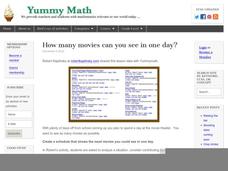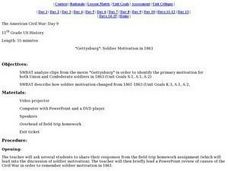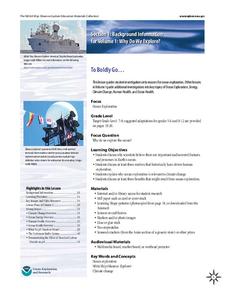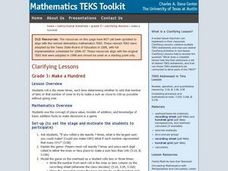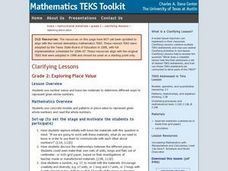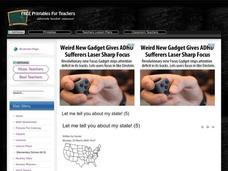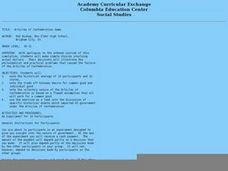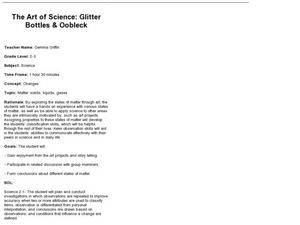Curated OER
Grade 1: More Land or Water?
First graders listen as the teacher reads a story involving cross-continent traveling. Students collect a random sample by tossing an inflatable globe and recording whether they touch land or water each time they catch the globe in order...
Curated OER
Motivation
Students examine the role of motivation in the workplace. They identify different motivation techniques and analyze the views of motivational thinkers. They apply the knowledge they gathered to different scenerios.
Curated OER
How many movies can you see in one day?
For kids who love movies, figuring out a schedule for the maximum number that can be seen in one day is not only a good demonstration of Common Core mathematical practices, but also a highly motivating activity. Robert Kaplinsky...
Curated OER
To Be (Half) Or Not To Be (Half)
First graders demonstrate various ways to represent and verify a whole or set separated in two, three, or four equal parts. Using interlocking cubes, Students model a part of a whole or a part of a set. They use appropriate tools and...
Curated OER
"Gettysburg": Soldier Motivation in 1863
Eleventh graders watch and discuss various clips from the movie "Gettysburg". Using the video, they identify the main motivation for the Union and Confederate soldiers. They describe how soldiers motivation changed from 1861 and 1863.
NOAA
To Boldly Go...
When we think of ocean exploration, many of us have visions of sunken pirate ships full of treasure or mysterious creatures of the deep. What really motivates deep-sea investigation? The first in a series of diverse six-part lessons...
Curated OER
Grade 3: Palindrome Patterns
Third graders use addition to create numbers that are palindromes and organize their results to look for patterns. They make generalizations from patterns and practice reading large numbers and addition with regrouping.
Curated OER
Using Poster Presentations with ESL Students
Students organize ways to present effective poster presentations. Students skill their posters by the majors they have chosen. Students engage in researching how to use their collaboration time in groups effectively.
Curated OER
Grade 5: Testing for Tessellations
Fifth graders use formal geometric language to describe polygons (and other shapes) that will tessellate the plane and those that will not. Students make generalizations about the characteristics of a polygon (or other shape) that will...
Curated OER
Grade 5: Multiple Towers
Fifth graders use interlocking cubes to build towers to represent factors of numbers and place the towers in the appropriate places on a Tower chart in order to look for patterns. They work in partner groups, and finish by writing...
Curated OER
Grade 3: What Can I Make with 30 Centimeters?
Third graders create polygons with perimeters of 30 centimeters, use the centimeter grid paper to determine the area of each shape, and organize the shapes to make generalizations from the patterns they see.
Curated OER
Grade 3: Make a Hundred
Third graders roll a die seven times, each time determining whether to add that number of tens or that number of ones to try to make a sum as close to 100 as possible without going over.
Curated OER
Energy Sources and Use
Students read and understand the importance of energy sources. In this Renewable and nonrenewable lesson plan, students read an article to become familiar with the uses of energy. Students read an article and answer questions...
Curated OER
Grade 2: Exploring Place Value
Creative problem solving is fun and helps kids conceptualize content. They use grid paper, manilla paper, and markers to cut, draw, and show given double-digit numbers as many ways as they can.
Curated OER
Grade 2: Spinning Sums
Second graders collect data by spinning two spinners and creating sums, organize the data, and make conclusions from the data. Each students makes a spinner. They spin and record the number of the section each time. Students work in...
Curated OER
Fruity Math
Students solve one step linear equations. In this algebra lesson, students manipulate their variables and numbers to answer each problem. They make sure the equations stay balanced at all times.
Curated OER
Let Me Tell You About My State
Fifth graders research one of the 50 U.S. States that they were unfamiliar with. In this U.S. Geography lesson, 5th graders utilize encyclopedias as well as the Internet to research a chosen U.S. State in order to write a report....
Curated OER
Grade 5: Alphabet Frequency
Fifth graders collect and organize data from writing samples, use fractions and decimals to describe the experimental data, and use the experimental results to make predictions about the frequency of letter usage in the English language.
Curated OER
Grade 2: Roll or Slide?
Second graders organize solids into categories, depending upon whether they will roll, slide or do both on a home made ramp. Students describe and compare attributes of three-dimensional geometric solids.
Curated OER
Pre-Columbian Cultures in the Americas
Native American studies is fun, educational, and highly motivating. Fifth graders will gain a deeper understanding of the six major pre-Columbian culture areas on the North American continent. They will choose one group and conduct...
Curated OER
Articles of Confederation Game
Why did the Articles of Confederation fail? Your historians will find out firsthand through this simulation activity, during which they will use money (consider using extra credit) to demonstrate the inherent flaws. It's simple: each...
Curated OER
Art On Trial (A Mock-Court Activity)
Students engage in a mock trial to decide if a work of prospective public art is "art" and accepted for a city park. They broaden their definitions of what "art" is. Students distinguish between opinion and informed judgment of art works.
Curated OER
The One in the Middle
Pupils review and reinforce the concepts of mean, median, and mode based on the number of siblings the students have. They use Post-it notes to organize and re-organize the data.
Curated OER
The Art of Science: Glitter Bottles and Oobleck
After having a class discussion on the three states of matter, young scientists utilize the wonderful substance, Oobleck in order to experience something that changes states of matter. They also create "sparkle jars" which...


